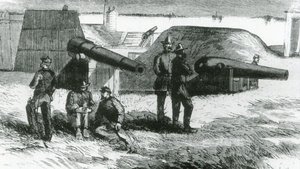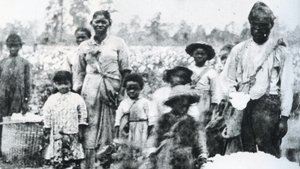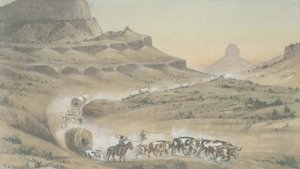
The Civil War was the most devastating event in American history. Three southern national monuments tell the story of the war's origin ... The attack that started the conflict ... And how the American Civil War changed the country and the very nature of warfare itself. Chapter 1: George Washington Carver National Monument (Missouri) Chapter 2: Fort Sumter National Monument (South Carolina) Chapter 3: Fort Pulaski National Monument (Georgia)

The American South is home to some of the world's most spectacular ecosystems, from coral reefs to salt water marshes. It is also home to the origin of slavery and the plantation system in America. Three national monuments present this profound legacy of ecology and history ... a history that includes the birth of the nation's first and greatest president, George Washington. Chapter 1: Buck Island Reef and Virgin Islands Coral Reef National Monuments (Virgin Islands) Chapter 2: George Washington Birthplace National Monument (Virginia)

Of the three European countries vying for control of what would become the United States; Spain was the first to establish a colony more than 40 years before the English founded Jamestown. Three monuments tell the rich story of colonial Spain in the South. Chapter 1: Fort Matanzas and Castillo de San Marcos National Monuments (Florida) Chapter 2: Fort Frederica National Monument (Georgia)

In the South are ruins of prehistoric cities, rivaling any in the ancient world. They were built by Native American cultures living in the South. It is a largely unknown story ... A story you can learn by traveling to the region's three national monuments devoted to prehistory. Chapter 1: Poverty Point National Monument (Louisiana) Chapter 2: Russell Cave National Monument (Alabama) Chapter 3: Ocmulgee National Monument (Georgia)

The southern Plains are distinguished by short grass prairies . . . hot, dry summers, and cold, windy winters. But in spite of these tough climatic conditions, the area is rich in human history. Indeed, the southern Plains are called the cradle of North American culture Chapter 1: Alibates Flint Quarry National Monument (Texas) Chapter 2: Capulin Volcano National Monument (New Mexico) Chapter 3: Fort Union National Monument (New Mexico)

When President Thomas Jefferson purchased the Louisiana territory from the French in 1803, he essentially added the Great Plains to the United States. From that point forward, Americans looked to form a nation from sea to sea . . . A great continental nation. This push west was called Manifest Destiny. Two National Monuments commemorate the heroic struggle of ordinary Americans to fulfill the American dream of Manifest Destiny. Chapter 1: Scott's Bluff National Monument (Nebraska) Chapter 2: Homestead National Monument (Nebraska)

The Northern Great Plains stretch from Minnesota in the east to the Rocky Mountains in the West. During the 19th century, this vast land of prairie grass and buffalo was the domain of the Sioux Indian Nation . . . a nation that would soon be at the heart of the Plains Indian wars. Chapter 1: Pipestone National Monument (Minnesota) Chapter 2: Little Bighorn Battle Site National Monument (Montana)

The geology of the Great Plains is a product of long epochs of sedimentary build-up followed by equally long epochs of erosion. The result today is a dramatic landscape of bluffs, pinnacles and badlands that contain the rich story, of ancient sea creatures, dinosaurs and long extinct, giant land mammals. But it was the rising up of the Black Hills in the vast Great Plains that created incredibly dramatic geological features. Chapter 1: Devils Tower National Monument (Wyoming) Chapter 2: Jewel Cave National Monument (South Dakota) Chapter 3: Agate Fossil Beds National Monument (Nebraska)